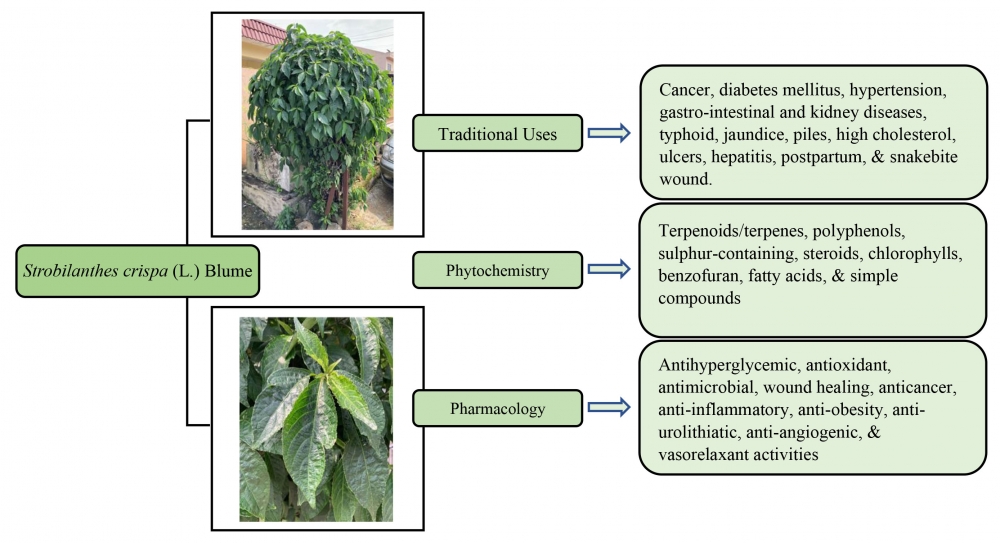JOURNAL 2785
Records of Natural Products
Year: 2023 Issue: 5 September-October
p.743 - 792
Viewed 3014 times.
GRAPHICAL ABSTRACT

ABSTRACT
Strobilanthes crispa (L.) Blume (S. crispa) is a folklore medicinal plant of the genus Strobilanthes (Acanthaceae), traditionally used in Malaysia and Indonesia to treat various diseases such as breast and uterine cancers, diabetes mellitus, hypertension, gastrointestinal and kidney diseases, typhoid, jaundice, piles, high cholesterol, and ulcers. Several studies have shown that S. crispa contains a variety of phytochemicals, including terpenoids, flavonoids, phenolic compounds, sulfur-containing, steroids, chlorophylls, benzofuran, fatty acids, and other simple metabolites. Furthermore, based on its traditional uses, S. crispa has demonstrated a wide range of in vitro and in vivo pharmacological activities. These activities include antihyperglycemic, antioxidant, antimicrobial, wound healing, anticancer, anti-trypanosomal, anti-inflammatory, anti-obesity, anti-urolithiatic, anti-angiogenic, and vasorelaxant activity. The paper aims to provide a comprehensive review of the current understanding of traditional use, toxicity, phytochemicals, and pharmacological studies of S. crispa, thereby validating its ethnopharmacological applications and exploring possible research opportunities.
KEYWORDS- Strobilanthes crispa
- Acanthaceae
- traditional uses
- phytochemistry
- pharmacology